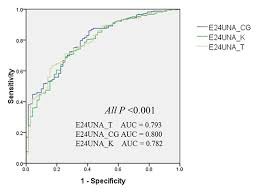Adjusted Body Weight Calculator: How to Calculate Adjusted Body Weight
One of the most important accomplishments in life is to lose weight. It is a process of discipline, sacrifice, and change. However, to most individuals, the achievement of their weight-loss objectives is accompanied by a new problem of loose skin. The skin, which used to be loose enough to hold additional fat, is sometimes unable to contract back, and leaves folds around the stomach, arms, thighs, or even the face. Although this may be frustrating, the good news is that there are a number of ways to prevent, reduce, and treat sagging skin- just as medical professionals use an adjusted body weight calculator to draw precise health conclusions.
When we lose a lot of weight, our skin often finds it hard to bounce back, particularly when we have been overweight for a long period of time. The reason is that when weight loss occurs, the skin becomes looser as the elastin and collagen are lost, and the longer the individual has been overweight or obese, the looser the skin becomes. Though achieving your weight loss goals is a wonderful thing to do, dealing with loose skin after losing weight is irritating and even affects your self-esteem. In the same way doctors use the calculation for adjusted body weight to balance actual and ideal values, you can use science-backed methods to balance your body’s skin health.
This is so because weight gain and weight loss both result in the skin stretching and losing its elasticity, as per Princeton University Health Services. Moreover, the response of your skin depends on a variety of significant factors, such as age, heredity, lifestyle habits, and weight loss. In fact, research has found that nicotine use and tobacco smoke damage the skin and increase the chances of premature aging. That’s why, just like professionals explain how to calculate adjusted body weight for precision in medicine, individuals need the right strategies to restore elasticity.
The good news? How to shrink skin after weight loss has efficient natural ways. We will examine scientifically proven ways in which you can cope with sagging skin, whether on your tummy, abs, or even a sagging face after losing weight. These involve weight loss (CDC recommends that you lose 1-2 pounds a week), proper hydration (experts recommend that you drink at least 16 glasses of water a day when you have loose skin), and strength training to tighten the skin around the tummy and increase its elasticity. The right formula for your health, as an adjusted body weight calculator uses formulas to make the results accurate, can help you get long-term results.
In this ultimate guide, we will provide some useful tips on how to tighten and shrink skin after weight loss, whether through natural remedies or medical procedures, so that you can completely enjoy the new you. Whether your concern is how to tighten skin on abs, choosing the right procedure to remove excess skin before and after weight loss, or simply learning how to calculate adjusted body weight for a healthier body, the strategies below will help you build confidence and maintain your transformation.
What is Adjusted Body Weight?
The adjusted body weight calculator is one of the clinical tools used in medicine and nutrition. When ideal body weight (IBW) and actual body weight (ABW) don’t provide realistic values, it gives a more accurate figure for patients who are overweight or obese.
- Actual Body Weight (ABW): This is the figure that you are looking at on the scale.
- Ideal Body Weight (IBW): Theoretical ideal weight according to height and gender.
- Adjusted Body Weight (AdjBW): A recalculated weight based on a formula that is a combination of IBW and ABW.
Fact: The calculation for adjusted body weight is especially important in drug dosing and clinical nutrition, where precision matters. (see more)
Why Use an Adjusted Body Weight Calculator?
- There are three big reasons:
- Proper Medical Dose- There are certain drugs such as antibiotics or chemotherapy that are dangerous when overdosed. The weight loss calculator customizes to reduce risk.
- Nutrition Planning – Dietitians need to know how to calculate adjusted body weight to prescribe calories and protein correctly.
- Balanced Estimate- The equation eliminates the overestimation of ABW and the underestimation of IBW.
Quote: “Using an adjusted body weight calculator is about precision. It balances science with safety.”
How to Calculate Adjusted Body Weight
Now, let’s get practical. Many people ask: How to calculate adjusted body weight?(see more)
Formula
Adjusted body weight = Standard calculation:
Adjusted Body weight = IBW + 0.4 (Actual weight IBW).
Where:
- IBW = Ideal Body Weight (based on height and gender)
- Actual Weight = Weigh on scale.
Step-by-Step Example
Suppose:
- Height = 5’8” Male
- Actual Weight = 100 kg
- IBW = 70 kg
Step 1: 100 – 70 = 30
Step 2: 30 × 0.4 = 12
Step 3: 70 + 12 = 82 kg
The adjusted body weight calculator shows 82 kg is the clinical figure.
Table: Types of Weight Calculations
| Weight Type | Formula / Basis | Purpose | Example |
| Actual Body Weight | Scale reading | General use | 100 kg |
| Ideal Body Weight | Height + gender | Healthy weight | 70 kg |
| Adjusted Body Weight | IBW + 0.4 × (ABW – IBW) | Clinical dosing & nutrition | 82 kg |
When to Use an Adjusted Body Weight Calculator
Adjusted body weight is usually calculated when:
- A patient is >30% above IBW
- Dosing of medicine should be done correctly.
- Designing the diets of the obese patients.
Fact: Over 60% of hospital pharmacists use an adjusted body weight calculator when prescribing drugs for obese patients.
Online vs Manual Adjusted Body Weight Calculator
| Method | Pros | Cons |
| Manual Formula | Always accurate, educational | Slower, needs math |
| Online Calculator | Fast, user-friendly | Risk of wrong formula |
Always double-check an online adjusted body weight calculator with manual math.
Infographic Idea
Flowchart design:
- Input Height + Gender → IBW
- Input Actual Weight
- Apply formula (0.4 correction)
- Output = Adjusted Body Weight
Applications of the Adjusted Body Weight Calculator
- In Medicine
- Anesthesia (dose of drug), antibiotics (dose of drug)
- Chemotherapy dosing
- Prevention of excessive dose in obese patients.
- In Nutrition
- Setting calorie intake
- Protein requirements
- Clinical diet planning
- In Fitness
- Trainers use adjusted body weight calculators to design safe workout and diet plans.
Adjusted Body Weight vs. Other Metrics

When comparing the different body measurement systems, the medical practitioners are expected to be aware of the individual uses. That’s why the adjusted body weight calculator and the calculation for adjusted body weight are often contrasted with BMI and IBW to show their clinical advantages. Let us step by step compare the difference in this formula.
Comparison with BMI
The Body Mass Index (BMI) is a list of people according to their body size, calculated by the number of kilograms of weight divided by the number of square meters of height. But BMI fails to distinguish between muscle and fat mass. In comparison, the adjusted body weight calculator considers metabolically active tissue and gives a more accurate image when applied in medicine. While BMI is mainly for screening possible weight problems, the calculation for adjusted body weight goes beyond classification by helping doctors and dietitians determine drug dosages, nutritional plans, and patient-specific assessments. For anyone learning how to calculate adjusted body weight, this difference is critical to understand.
How it Differs from Ideal Body Weight (IBW)
Ideal Body Weight (IBW) is an estimate of the weight that an individual should have due to height, gender, and, in some cases, age. It establishes a range of targets but does not pay attention to the current body condition of a patient. Rather, the adjusted body weight calculator takes IBW and Actual Body Weight (ABW) and creates an intermediate between the two that recognizes the metabolic differences in tissues. This balance, achieved through the calculation for adjusted body weight, is why healthcare providers emphasize learning how to calculate adjusted body weight correctly.
Why Adjusted Body Weight is More Accurate in Certain Cases
The adjusted body weight calculator provides much better accuracy for individuals who are significantly overweight or underweight. When addressing fluid retention disorders such as edema, ascites, or chronic kidney disease, adjusted body weight has to be calculated in order to establish a desirable dosing and nutrition regimen. Moreover, special groups, including patients with spinal cord injuries, amputations, or abnormal body structures, are the most beneficiaries when physicians understand how to calculate adjusted body weight and use it appropriately.
Mistakes in Calculation for Adjusted Body Weight
- Actual weight rather than adjusted weight.
- Leaving IBW out of the calculations.
- Use of formula on underweight patients.
- The wrong correction factor (0.4 is standard) was used. (see more)
Conclusion
The adjusted body weight calculator and its formula are also valuable to medical practitioners who need more accurate measurements than standard measures. We have discussed in this article how the calculation for adjusted body weight is much more accurate for clinical applications because it gives a balanced representation of both lean and fat mass. Rather than using real or ideal values alone, the adjusted body weight calculator is a sure way to reach the middle ground.
IBW + 0.4 (ABW-IBW) is a simple formula that can give medical professionals a consistent way of computing adjusted body weight when determining the correct doses of drugs and nutritional needs. The limitations of both ideal and actual body weight measurements are most significantly addressed by this computation, especially for patients who are underweight or obese. This makes the calculation for adjusted body weight one of the most effective methods in clinical nutrition and pharmacy.
Understanding when to apply the adjusted body weight calculator is certainly helpful to healthcare providers. This data is especially useful in the prescription of medications such as aminoglycoside antibiotics, the development of personalized weight-loss programs, the management of chronic diseases such as kidney disease, and the development of personalized nutrition therapy programs. The fact that the adjusted body weight calculation enables practitioners to apply the formula in different medical situations safely and reliably makes the calculation of the adjusted body weight possible.
Because it takes into account metabolic variations in different tissue types and current body composition, adjusted body weight is unique when compared to BMI and ideal body weight calculations. This is why the adjusted body weight calculator is particularly effective with patients who have abnormal body compositions, including patients who have undergone amputations, spinal cord injuries, or diseases that produce fluid retention.
Learning to compute adjusted body weight and use the results eventually results in improved patient outcomes. Therefore, whether you work in healthcare or simply wish to understand body composition measurements better, mastering the calculation for adjusted body weight with the help of an adjusted body weight calculator provides valuable insight into more personalized and accurate body assessment methods.
FAQ
The formula for the calculation of adjusted body weight is:
Adjusted Body weight = IBW + 0.4 (ABW-IBW)
In this case, ABW will be the actual body weight (weighed on a scale), and IBW will be the ideal body weight (according to height and gender). This formula is the most accurate when used in an adjusted body weight calculator. This is the standard way to compute adjusted body weight in a clinical setting, should you be wondering how to compute it.
The adjusted body weight calculator is most commonly used in cases where the exact dosage of a drug is needed, particularly antibiotics such as aminoglycosides. It has additionally been used in nutrition therapy, dieting, chronic illness management, including kidney disease, and in weight-loss programs to establish attainable objectives. Adjusted body weight calculation is a reliable way to balance between ideal and actual weight, and it is used in hospitals and clinics.
BMI just gives a comparison of weight to height squared, whereas the adjusted body weight calculator takes into consideration lean mass and fat mass. This is more precise than BMI, particularly in obese or underweight patients. Knowledge of how to calculate adjusted body weight gives the medical and nutritional professional a more realistic picture of body composition, which is why it is very useful in medical and nutritional practice.
Not every patient requires the adjusted body weight calculator. It is most helpful in cases where one is either too fat or too thin. However, the adjusted body weight calculation can also be utilized in patients with abnormal body structures such as amputations, spinal cord injuries, or fluid retention. Adjusted body weight calculation will ensure that even in special cases, the assessment is done properly.
Adjusted body weight is calculated with an adjustment factor of between 0.25 and 0.4. The most common dosing of medication is 0.4 (40%), and the most common calculation of nutrition is 0.25 (25%). This adjustment is built into every professional body weight calculator, as it acknowledges that excess fat tissue is less metabolically active than lean tissue but not entirely inactive.




